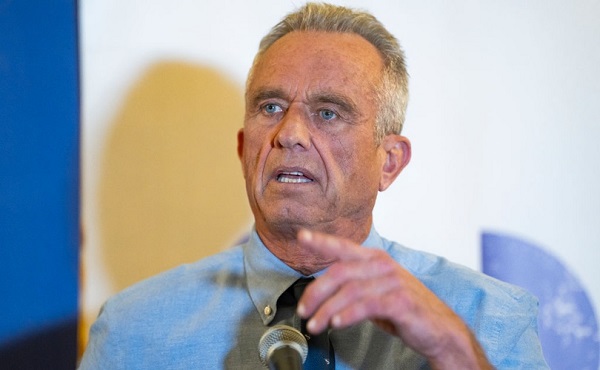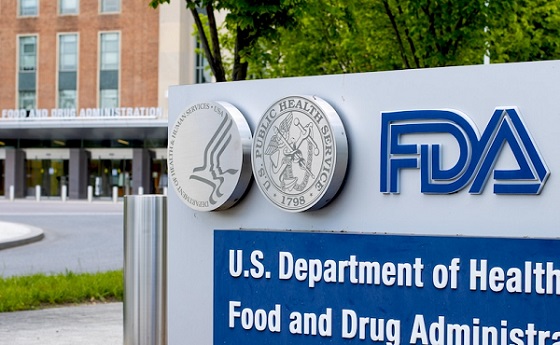Business
From ‘brilliant’ to ‘aghast’: Reactions to RFK Jr.’s nomination for HHS secretary run the gamut

From LifeSiteNews
By Dr. Brenda Baletti, The Defender
From “brilliant” to “aghast” – President-elect Donald J. Trump’s nomination on Thursday of Robert F. Kennedy Jr., founder of Children’s Health Defense (CHD), to run the U.S. Department of Health and Human Services (HHS) triggered a range of reactions among media outlets, public health officials, and Kennedy’s long-time supporters and detractors.
In a statement posted on Truth Social and X, Trump said Kennedy would restore the public health agencies “to the traditions of Gold Standard Scientific Research, and beacons of Transparency, to end the Chronic Disease epidemic, and to Make America Great and Healthy Again!”
Kennedy, who promised to fight corruption and end the revolving door between industry and government, thanked Trump for the nomination on social media. He said he would “free the agencies from the smothering cloud of corporate capture so they can pursue their mission to make Americans once again the healthiest people on Earth.”
Kennedy is a longtime critic of how corporate interests have captured the public health agencies meant to regulate them, and of the outsized and corrupt role that Big Pharma plays in American life.
If confirmed, Kennedy would hold the most powerful governmental position in public health, overseeing 80,000 employees across a department that houses 13 agencies and more than 100 programs. Those agencies include the Centers for Disease Control and Prevention (CDC), the U.S. Food and Drug Administration (FDA), the National Institutes of Health and the Center for Medicaid and Medicare Services.
CHD CEO Mary Holland told The Defender the organization “could not be more pleased” with the nomination, adding:
Kennedy has been devoted to ending the childhood chronic health epidemic for almost 20 years. He has been effective in communicating the failures of our existing public health establishment.
Based on his extensive litigation history, he is uniquely prepared to reform the regulatory institutions, the research institutions, and public education on health. I look forward to seeing dramatic, measurable improvements in Americans’ health during the Trump administration.
Cardiologist Dr. Peter McCullough told Fox News that Kennedy would be “such a contrast” to previous public health leadership. He said Kennedy would focus on data transparency and accountability. “I think we’re going to see a total overhaul of healthcare administration.”
Democratic Colorado Gov. Jared Polis said on X that he was “excited by the news,” particularly about Kennedy’s commitment to fighting chemicals in foods, the power of Big Pharma, and to other health priorities.
“I hope he leans into personal choice on vaccines rather than bans (which I think are terrible, just like mandates) but what I’m most optimistic about is taking on big pharma and the corporate ag oligopoly to improve our health,” he added.
Rep. Chip Roy (R-Texas) told Fox News, “I think Robert is another disruptor. We need a disruptor. I will be glad and I’m looking forward to working with him,” Politico reported.
Sen. Ron Johnson (R-Wis.) called Kennedy a “brilliant, courageous truth-teller” and said he could make the “most significant impact on health.”
Vaccine stocks take a dive on news of announcement
On the flip side, some lawmakers and public health leaders expressed alarm, decrying the nomination.
U.S. Rep. Robert Garcia (D-Calif.) called the choice “f— insane” on X, Fox News reported. “He’s a vaccine denier and a tin foil hat conspiracy theorist. He will destroy our public health infrastructure and our vaccine distribution systems. This is going to cost lives.”
Dr. Richard E. Besser, CEO of the Robert Wood Johnson Foundation and a former acting director of the CDC, said that having Kennedy head up HHS “would pose incredible risks to the health of the nation,” because Kennedy’s critique of the public health agencies was worsening the mistrust lingering after the coronavirus pandemic, The New York Times reported.
Besser told CNN that some of Kennedy’s ideas about chronic health issues regarding children were good ideas, but other ideas were deeply concerning – particularly Kennedy’s proposal that individuals should decide for themselves whether to take a vaccine.
“The idea that receiving childhood vaccines would be a parental choice scares me,” he said.
READ: Canada’s public health agency still working to adopt WHO pandemic treaty: report
Current CDC Director Mandy Cohen raised concerns that Kennedy would use the position to spread misinformation and foster distrust in public health institutions, particularly with respect to vaccines.
Kennedy has called for an end to immunity for vaccine manufacturers for the injuries caused by their products. He points out that no vaccine on the childhood immunization schedule has undergone proper safety and efficacy testing.
He has been a long-term advocate for the tens of thousands of families seeking compensation for their children’s vaccine-induced autism.
Kennedy also promised that, if confirmed, he would make the V-safe vaccine injury data collected but not made public by the CDC transparent, so scientists have access to the data necessary to analyze vaccine safety
Vaccine and Pharma stocks fell sharply this morning, following yesterday’s announcement about Kennedy, Reuters reported.
Bavarian Nordic, which makes the mpox vaccine, was down 16 percent. Its CEO told Reuters he was concerned that Kennedy could fuel vaccine skepticism.
However, he also said that the U.S. response to the COVID-19 pandemic under Trump’s first term made him confident that the incoming administration would continue to fund biodefense.
The Trump administration launched and oversaw Operation Warp Speed, the public-private partnership to rapidly develop a COVID-19 vaccine that gave vaccine makers hundreds of billions in profits along with total immunity for any harms caused by those investigational vaccines under the Public Readiness and Emergency Preparedness (PREP) Act.
Kennedy will be ‘single greatest threat to profits in America’
Republican advisers have cautioned that Kennedy could face a difficult path to confirmation, The Washington Post reported, citing his “past statements on drugs and vaccines, and his many personal entanglements.” FiercePharma said his confirmation process is likely “to be contentious.”
Physician, professor and Substacker Dr. Vinay Prasad wrote that Trump could use a recess appointment to secure Kennedy’s position, but that he will likely need to be confirmed by the Senate where “He has a several hundred billion dollar industry that will do everything possible to stop him.”
“Many of these companies have lobbied throughout Congress,” Prasad added. “They will use those connections. Unlike other controversial appointees, RFK Jr. will be the single greatest threat to profits in America.”
If his appointment goes through, Prasad said Kennedy will face a difficult road in getting his proposed policies enacted, given the entrenched power of Pharma and the power of the media that opposes him.
Law professor Wendy Parmet, director of Northeastern University’s Center for Health Policy and Law, pointed to the potential clash between Kennedy’s anti-industry position and the big-business leanings of the Republican Party.
“We have an administration that promises to deregulate, to be business-friendly, and then we have RFK Jr., who promises to go after fast food,” Parmet told The Washington Post.
READ: Idaho health district votes to stop offering COVID vaccines at its medical centers
Health and health freedom advocates optimistic Kennedy will bring change
Despite the challenges ahead, health advocates are optimistic that changes they have been seeking for decades will come to pass.
During the COVID-19 pandemic, critics of pandemic policies were condemned and marginalized. Kennedy was censored by the Biden administration and social media companies as part of the so-called “Disinformation Dozen” for airing many of those critiques.
Over the course of the election Kennedy – who ran for president as a Democrat, then announced he was running as an independent before suspending his campaign and endorsing Trump – has repeatedly been called a “conspiracy theorist.” Both Kennedy and CHD are routinely dismissed as “anti-vax” for openly discussing the scientific evidence on the link between vaccines and chronic diseases including autism, attention-deficit/hyperactivity disorder or ADHD and other neuropsychiatric and autoimmune disorders, in some children.
Rather than investigating the science, mainstream media mostly insists these links have been “debunked,” without providing any evidence for their claim.
Kennedy has also called for the removal of fluoride from public drinking water, citing recent studies and a landmark federal court decision that show it interferes with children’s brain development – a concern that has even been flagged by some mainstream public health commentators.
His supporters hope these issues will now receive serious public attention that will lead to policy change.
Holland said on X that Kennedy’s nomination came 38 years to the day after the Vaccine Injury Act that gave vaccine manufacturers immunity from liability was signed into law.
“Let’s rewrite this one,” she said.
Agriculture
Supply Management Is Making Your Christmas Dinner More Expensive

From the Frontier Centre for Public Policy
By Conrad Eder
The food may be festive, but the price tag isn’t, and supply management is to blame
With Christmas around the corner, Canadians will be heading to the grocery store to pick up the essentials for a tasty Christmas feast. Milk and eggs to make dinner rolls, butter for creamy mashed potatoes, an assortment of cheeses as an appetizer, and, of course, the Christmas turkey.
All delicious. All essential. And all more expensive than they need to be because of a longstanding government policy. It’s called supply management.
Consider what a family might purchase when hosting Christmas dinner. Two cartons of eggs, two cartons of milk, a couple of blocks of cheese, a few sticks of butter, and an eight-kilogram turkey. According to Agriculture and Agri-Food Canada and Statistics Canada, that basket of goods costs a little less than $80.
Using price premiums calculated in a 2015 University of Manitoba study, Canada’s supply management system is responsible for $16.69 to $20.48 of the cost of that Christmas dinner. That’s a 21 to 26 per cent premium Canadian consumers pay on those five staples alone. Planning on making a yogurt dip or serving ice cream with dessert? Those extra costs continue to climb.
Canadians pay these premiums for poultry, dairy and eggs because of how Canada’s supply management system works. Farmers must obtain government-issued production quotas that dictate how much they’re allowed to produce. Prices are set by government bodies rather than in an open market. High tariffs block imports and restrict competition from international producers.
The costs of supply management are significant, amounting to billions of dollars every year, yet they are largely hidden, spread across millions of households’ grocery bills. Meanwhile, the benefits flow to a small number of quota-holding farmers. Their quotas are worth millions of dollars and help ensure profitable returns.
These farmers have every incentive to lobby, organize and defend the current system. Wanting special protection is one thing. Actually being given it is another. It is the responsibility of elected officials to resist such demands. Elected to represent all Canadians, politicians should unapologetically prioritize the public interest over any special interests.
Yet in June 2025, Parliament did the opposite. Rather than solve a problem that costs Canadians billions each year, members of Parliament from every party, Liberal, Conservative, Bloc, NDP and Green, unanimously approved Bill C-202, further entrenching the system that makes grocery bills more expensive at a time when families can least afford it. Bill C-202 prohibits Canada from offering any further market access concessions on supply-managed sectors in future trade negotiations.
This decision is even more disappointing when we consider what other nations have already accomplished. Australia and New Zealand demonstrate that removing supply management is not only possible but beneficial.
Australia operated a dairy quota system for decades before abolishing it in 2000. New Zealand began dismantling its dairy supply management regime in 1984 and completed the process in 2001. Both countries found that competitive markets provided their citizens with the access to goods they needed without the hidden costs. If these countries could eliminate supply management, so can Canada.
As the government scrambles to combat the rising cost of living, one of the simplest and most effective solutions continues to be ignored. Eliminating supply management. Removing the quotas, the price controls and the tariffs would allow market competition to do what it does across every other product category. It delivers choice, quality and affordability.
As Canadians gather for Christmas dinner, the feast may be delicious, but it will once again be more expensive than it needs to be. That is the cost of supply management, and Canadians should no longer have to bear it.
Conrad Eder is a policy analyst at the Frontier Centre for Public Policy.
Business
Taxing food is like slapping a surcharge on hunger. It needs to end

This article supplied by Troy Media.
Cutting the food tax is one clear way to ease the cost-of-living crisis for Canadians
About a year ago, Canada experimented with something rare in federal policymaking: a temporary GST holiday on prepared foods.
It was short-lived and poorly communicated, yet Canadians noticed it immediately. One of the most unavoidable expenses in daily life—food—became marginally less costly.
Families felt a modest but genuine reprieve. Restaurants saw a bump in customer traffic. For a brief moment, Canadians experienced what it feels like when government steps back from taxing something as basic as eating.
Then the tax returned with opportunistic pricing, restoring a policy that quietly but reliably makes the cost of living more expensive for everyone.
In many ways, the temporary GST cut was worse than doing nothing. It opened the door for industry to adjust prices upward while consumers were distracted by the tax relief. That dynamic helped push our food inflation rate from minus 0.6 per cent in January to almost four per cent later in the year. By tinkering with taxes rather than addressing the structural flaws in the system, policymakers unintentionally fuelled volatility. Instead of experimenting with temporary fixes, it is time to confront the obvious: Canada should stop taxing food altogether.
Start with grocery stores. Many Canadians believe food is not taxed at retail, but that assumption is wrong. While “basic groceries” are zero-rated, a vast range of everyday food products are taxed, and Canadians now pay over a billion dollars a year in GST/HST on food purchased in grocery stores.
That amount is rising steadily, not because Canadians are buying more treats, but because shrinkflation is quietly pulling more products into taxable categories. A box of granola bars with six bars is tax-exempt, but when manufacturers quietly reduce the box to five bars, it becomes taxable. The product hasn’t changed. The nutritional profile hasn’t changed. Only the packaging has changed, yet the tax flips on.
This pattern now permeates the grocery aisle. A 650-gram bag of chips shrinks to 580 grams and becomes taxable. Muffins once sold in six-packs are reformatted into three-packs or individually wrapped portions, instantly becoming taxable single-serve items. Yogurt, traditionally sold in large tax-exempt tubs, increasingly appears in smaller 100-gram units that meet the definition of taxable snacks. Crackers, cookies, trail mixes and cereals have all seen slight weight reductions that push them past GST thresholds created decades ago. Inflation raises food prices; Canada’s outdated tax code amplifies those increases.
At the same time, grocery inflation remains elevated. Prices are rising at 3.4 per cent, nearly double the overall inflation rate. At a moment when food costs are climbing faster than almost everything else, continuing to tax food—whether on the shelf or in restaurants—makes even less economic sense.
The inconsistencies extend further. A steak purchased at the grocery store carries no tax, yet a breakfast wrap made from virtually the same inputs is taxed at five per cent GST plus applicable HST. The nutritional function is not different. The economic function is not different. But the tax treatment is entirely arbitrary, rooted in outdated distinctions that no longer reflect how Canadians live or work.
Lower-income households disproportionately bear the cost. They spend 6.2 per cent of their income eating outside the home, compared with 3.4 per cent for the highest-income households. When government taxes prepared food, it effectively imposes a higher burden on those often juggling two or three jobs with limited time to cook.
But this is not only about the poorest households. Every Canadian pays more because the tax embeds itself in the price of convenience, time and the realities of modern living.
And there is an overlooked economic dimension: restaurants are one of the most effective tools we have for stimulating community-level economic activity. When people dine out, they don’t just buy food. They participate in the economy. They support jobs for young and lower-income workers. They activate foot traffic in commercial areas. They drive spending in adjacent sectors such as transportation, retail, entertainment and tourism.
A healthy restaurant sector is a signal of economic confidence; it is often the first place consumers re-engage when they feel financially secure. Taxing prepared food, therefore, is not simply a tax on convenience—it is a tax on economic participation.
Restaurants Canada has been calling for the permanent removal of GST/HST on all food, and they are right. Eliminating the tax would generate $5.4 billion in consumer savings annually, create more than 64,000 foodservice jobs, add over 15,000 jobs in related sectors and support the opening of more than 2,600 new restaurants across the country. No other affordability measure available to the federal government delivers this combination of economic stimulus and direct relief.
And Canadians overwhelmingly agree. Eighty-four per cent believe food should not be taxed, regardless of where it is purchased. In a polarized political climate, a consensus of that magnitude is rare.
Ending the GST/HST on all food will not solve every affordability issue but it is one of the simplest, fairest and most effective measures the federal government can take immediately.
Food is food. The tax system should finally accept that.
Dr. Sylvain Charlebois is a Canadian professor and researcher in food distribution and policy. He is senior director of the Agri-Food Analytics Lab at Dalhousie University and co-host of The Food Professor Podcast. He is frequently cited in the media for his insights on food prices, agricultural trends, and the global food supply chain.
Troy Media empowers Canadian community news outlets by providing independent, insightful analysis and commentary. Our mission is to support local media in helping Canadians stay informed and engaged by delivering reliable content that strengthens community connections and deepens understanding across the country.
-

 Business1 day ago
Business1 day agoArgentina’s Milei delivers results free-market critics said wouldn’t work
-

 Business2 days ago
Business2 days agoState of the Canadian Economy: Number of publicly listed companies in Canada down 32.7% since 2010
-

 espionage20 hours ago
espionage20 hours agoCarney Floor Crossing Raises Counterintelligence Questions aimed at China, Former Senior Mountie Argues
-

 International2 days ago
International2 days agoDOJ fails to fully comply with Friday deadline for Epstein files release
-

 Business15 hours ago
Business15 hours agoTaxing food is like slapping a surcharge on hunger. It needs to end
-

 Alberta2 days ago
Alberta2 days agoAlberta’s new diagnostic policy appears to meet standard for Canada Health Act compliance
-

 Bruce Dowbiggin2 days ago
Bruce Dowbiggin2 days agoHunting Poilievre Covers For Upcoming Demographic Collapse After Boomers
-

 Health6 hours ago
Health6 hours agoFDA warns ‘breast binder’ manufacturers to stop marketing to gender-confused girls




